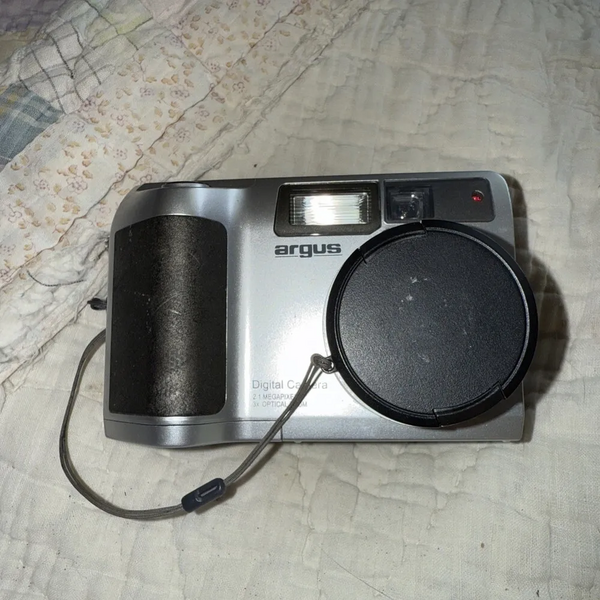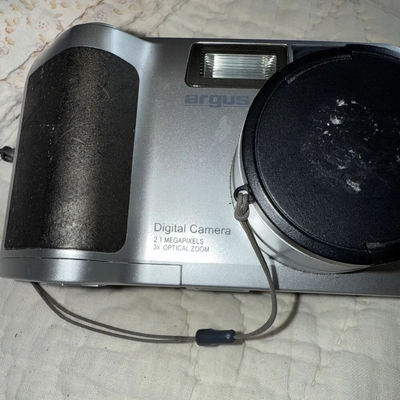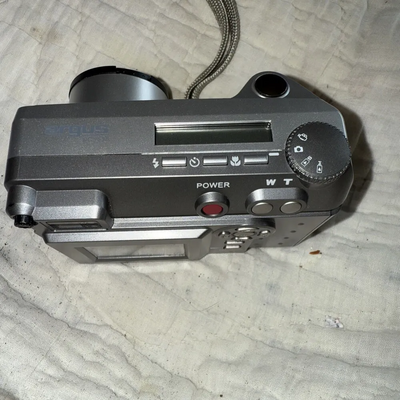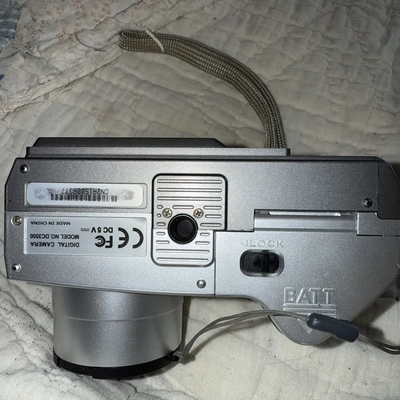
Argus 3550
| Brand | Argus 2003 |
| Model | 3550 |
| Released Year | 2003 |
| Type | DSLR Cameras |
| Series | Internet digital camera |
| Color | Silver |
| Optical Zoom | N/A |
| Status | Discontinued |
Quick view
Overview
The Argus 3550 is an Internet digital camera designed to transmit images over a network connection. It features a CMOS or CCD image sensor for capturing digital images and a built-in web server for remote viewing. The camera supports standard internet protocols allowing users to access live video streams or still images via a web browser. It includes image compression technology to optimize bandwidth use in network transmission. The device was among the pioneers in integrating camera technology with internet connectivity for surveillance purposes. Its hardware includes basic pan/tilt functions controlled remotely to cover a wider viewing area.
Specifications
| Digital Zoom | 3x |
| Color | Silver |
| MPN | DC-100 |
| Battery Type | AA |
| Series | Argus Internet Digital Camera |
| Type | Digital |
| Megapixels | 0.3MP |
| Maximum Resolution | 0.3 MP |
| Model | 3550 |
| Optical Zoom | N/A |
| Features | Auto Focus, Built-in Flash |
| Country/Region of Manufacture | China |
| UPC | 0760215301018 |
| Device Type | Internet digital camera |
| Sensor Type | CMOS or CCD |
| Connectivity | Ethernet, modem |
| Image Resolution | Low (standard definition) |
| Pan/Tilt | Yes, basic remote controlled |
| Night Vision | No |
| Web Server | Built-in for remote access |
Images
Key Advantages
The Argus 3550 provided early users the ability to monitor remote locations over the internet easily. It offered straightforward installation with network compatibility using standard Ethernet or modem connections. The built-in web server enabled easy access without needing dedicated software. Its pan/tilt capability enhances camera coverage reducing blind spots. The device supported motion detection for triggering alerts, improving security responses. Overall, it was innovative for enabling real-time remote monitoring during its time.
Limitations
The Argus 3550 had limited image resolution by today’s standards, resulting in lower-quality video and still images. It provided only basic pan/tilt functions without zoom or advanced rotational movement. Internet connectivity was restricted by the slower network speeds and bandwidth limitations from the early 2000s. The camera’s motion detection was relatively simple and prone to false alarms. There was no built-in night vision or infrared capability for low-light environments. Compatibility was limited to certain operating systems and browsers, affecting ease of use.
FAQ
What year was the Argus 3550 released?
The Argus 3550 was released in 2003.
Does the Argus 3550 support remote monitoring?
Yes, it supports remote monitoring through a built-in web server accessible via a web browser.
What type of sensor does the Argus 3550 use?
The Argus 3550 uses a digital CMOS or CCD sensor for image capture.
Does this camera have night vision capability?
No, the Argus 3550 does not include night vision or infrared features.
Can the camera be controlled remotely?
Yes, it features basic pan and tilt controls that can be operated remotely.
Is the Argus 3550 still available for purchase?
No, the model has been discontinued and is no longer produced.
What kind of network connections does the camera use?
It primarily supports Ethernet connections and may also work with dial-up modem connections.
Disclaimer
The content on is provided for general informational purposes only. We do not guarantee the accuracy, completeness, or reliability of any information, specifications, or visuals presented on the site.
is not responsible for any content, images, or data uploaded or shared by users. Users are solely responsible for the content they submit.
We may include links to third-party websites for convenience. We do not endorse or take responsibility for the content or policies of any external sites.
Use of the site is at your own risk. Always verify critical information independently before making decisions based on content from this website.




